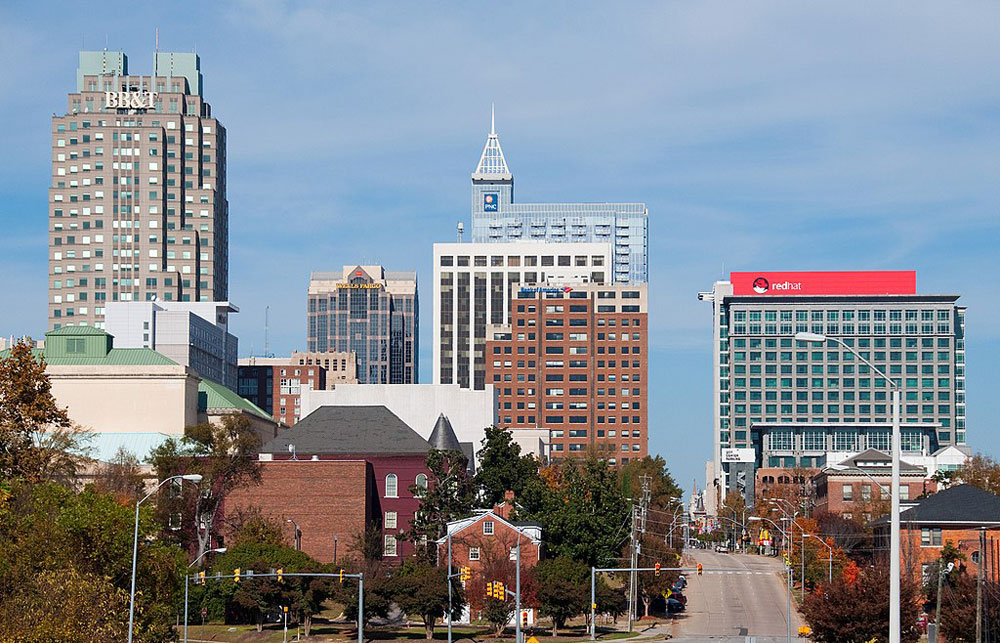
February 6, 2020; CityLab
In 1974, the city of Raleigh, North Carolina, led by its first black mayor, Clarence Lightner sought to institutionalize citizen participation in governing the city by establishing a formal network of 18 neighborhood-based citizen advisory councils (CACs). Council members are selected by residents and advise the city regarding proposed development projects in their neighborhoods.
Raleigh is hardly the only city to use advisory neighborhood councils in this fashion. Atlanta and Washington, DC are two other well-known examples. Now, however, Raleigh’s city council has voted to eliminate its system of neighborhood council, deeming them unrepresentative of residents. The vote was 6–2.
Originally, the CACs were envisioned as a means to be more inclusive of residents. The city’s website describes an important level of openness and independence:
Each CAC elects its own officers and decides its own activities and priorities. All CAC meetings are open to everyone; however, you can vote only at meetings of the CAC where you reside. You can attend as an individual or you can represent your neighborhood-based organization at your CAC meetings. CACs are nonpartisan. CACs are the only advisory boards to the City Council that are not appointed by the Council.
However, in practice, the current system has been called anything but inclusive. According to Sarah Holder in CityLab, “Critics have long complained that the councils function largely as a stronghold for Raleigh’s NIMBYs.” (That’s “not in my backyard.”)
City Council member Saige Martin described the coming end of the CAC system as urgent if equitable development plans are to rise above the stranglehold of self-interest. “We’re in this moment when the most critical choices, the most challenging issues we face as a city—affordable housing, increased rapid growth, gentrification—are happening more or less overnight,” Martin says. “We have a system in place that perpetuates that, and we don’t have the luxury of waiting for another year or two for a consultant to tell us what we already know.”
Data from a 2018 Community Survey suggest that despite their good intentions, CACs are not meeting the goal of building broad-based community input. Seventy percent of the survey’s respondents had not participated in a CAC meeting, while six percent could not remember if they had been a participant. A national study conducted by Boston University professors Katherine Levine-Einstein, Maxwell Palmer, and David Glick found that neighborhood council systems like Raleigh’s commonly amplify a privileged sliver of the community.
Sign up for our free newsletters
Subscribe to NPQ's newsletters to have our top stories delivered directly to your inbox.
By signing up, you agree to our privacy policy and terms of use, and to receive messages from NPQ and our partners.
“Individuals who are older, male, longtime residents; voters in local elections; and homeowners are significantly more likely to participate in these meetings,” the report concludes. “These individuals overwhelmingly (and to a much greater degree than the general public) oppose new housing construction. These participatory inequalities have important policy implications and may be contributing to rising housing costs.”
Levine-Einstein told CityLab that systems like Raleigh’s often present real barriers to inclusive land development. “The really thorny issue with direct democracy when it comes to land use planning…is we have seen time and time again that it’s way more advantageous to opponents of new housing than supporters of new housing. Because if you’re an opponent, you have this more intense incentive to show up.” Community organizer Zainab Baloch says, “Because people don’t engage in local government as much, these are the main people that councils will hear from…they’re the ones who will be most likely to vote in the next election.”
Those who do engage with the CACs see them as vital, and critics contend the city is making a serious mistake by discontinuing the program. Robert Rice, who chairs a CAC, disagrees that only some voices are being represented. “This idea that the power resides in only a few people that show up to the CAC meetings is disingenuous. Anybody that wants to come is welcome to come, and they do.” Bob Geary, another current CAC chair, as reported by IndyWeek, sees limiting the CAC system as actively reducing citizen input.
Removing the CACs from rezoning cases doesn’t strike me as step one to improving citizen engagement, let alone citizen participation, in the biggest sphere of municipal government, which is land use and development. It strikes me, rather, as the latest step in pushing citizens to the bleachers while the professionals play the game.
Raleigh’s mayor, Mary-Ann Baldwin, observes that this issue goes way beyond her city: “This is a national crisis. I think that people are finally waking up and saying, ‘Wait a minute, we have to do things differently…The bottom line is, we know we can do better.…a lot has changed since 1974.” Another current CAC leader, Joshua Gill, recognizes that this requires more than slow change. “You can only keep doing something the same way for so long if you’re not getting the results. It is difficult to see an institution I love, and support disappear in a day, but if a hard restart is what it takes to improve citizen engagement, I think it is necessary.”
Ironically, Raleigh’s elected leaders sought no citizen input in voting to end this form of citizen input. This has raised the ire of those currently working to make the CAC system work. Rice told CityLab, “It was a secret vote, embargo on the press, no room for any kind of comment. This isn’t how government should be working at all.”
Raleigh now seeks to hear their communities’ diverse voices in new ways. The mayor says his approach will be for the city to bring community engagement to the people where they are at—at the dog park, the playground, the bars, outside their front doors. Whether this will work and lead to greater inclusion, however, remains to be seen. Hopefully, out of the CAC’s ashes, a more inclusive system will arise.—Martin Levine













